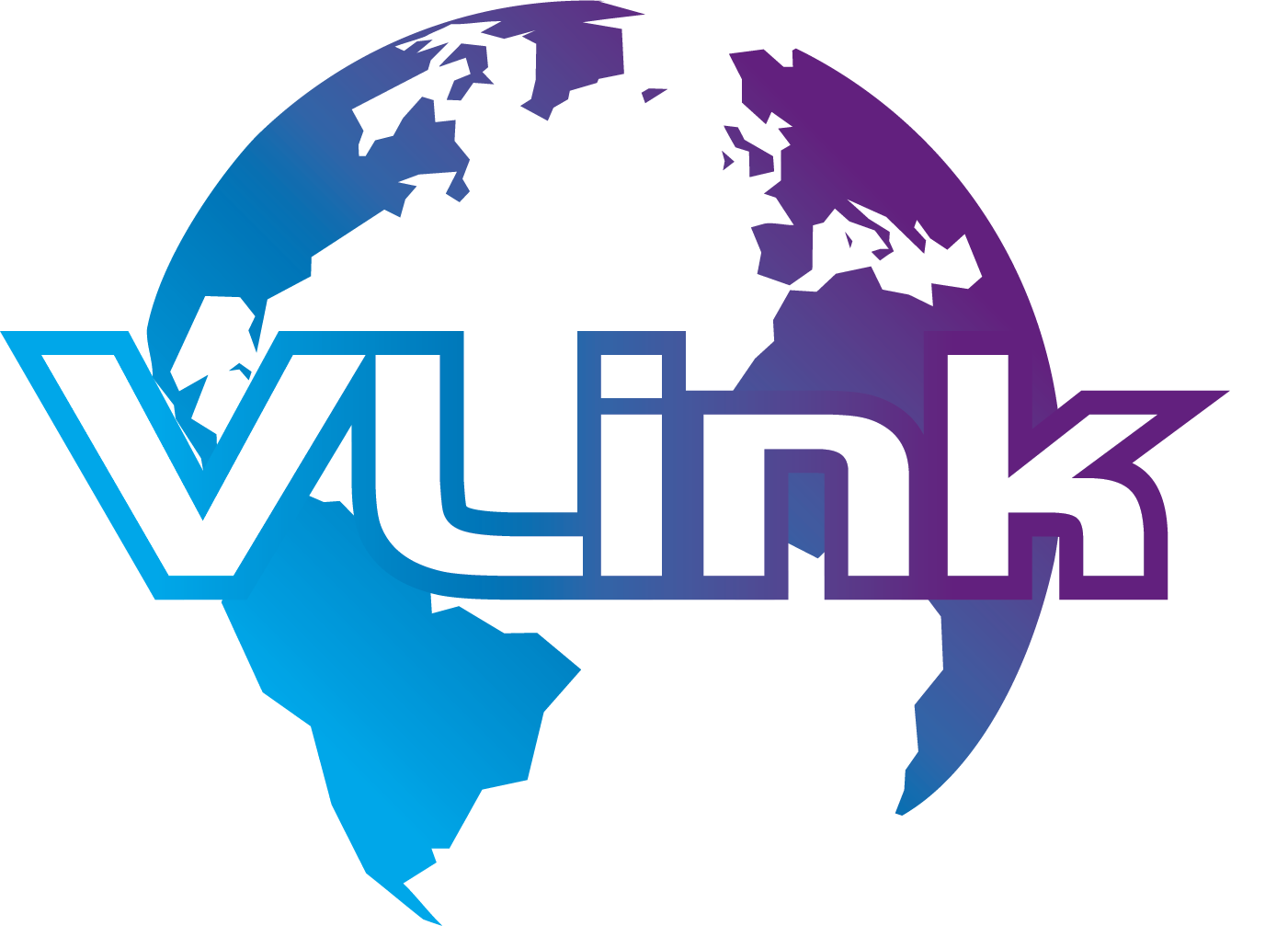
As the figures above clearly demonstrate, this significant growth underscores the industry's rapid shift toward AI-driven operations, which redefine efficiency and accuracy. This in-depth blog examines the full spectrum of 15 high-impact use cases of GenAI in insurance, supported by real-world examples, actionable insights, and statistics on operational ROI.
We’ll cover everything from underwriting and claims to compliance, fraud prevention, and customer engagement, with a practical focus for decision-makers seeking GenAI development services, insurance software development services, and AI/ML solutions providers.
Let’s Start!
The State of GenAI in Insurance: 2025 Snapshot
The momentum behind generative AI in insurance is undeniable. North America, driven by the US and Canadian markets, is leading the adoption curve. This exponential growth is driven by GenAI’s unique ability to analyze massive, unstructured datasets, generate synthetic data, personalize experiences, automate workflows, and ensure regulatory compliance at scale.
Key metrics showcasing the impact of GenAI in insurance:
- Market Growth: The global generative AI in insurance industry market is expected to grow at a Compound Annual Growth Rate (CAGR) of over 33% from 2025 to 2034.
- Claims Efficiency: GenAI implementation delivers up to 40% faster claims cycles, leading to reduced processing costs and significantly improved customer satisfaction.
- Fraud Reduction: Insurers leveraging generative AI for fraud detection are seeing a 25% decrease in fraudulent payouts, helping to save the industry billions of dollars annually.
- Underwriting Speed: Underwriting decisions are being made up to 60% faster, increasing operational throughput and allowing for more competitive pricing.
- Cost Savings: Insurers anticipate average cost savings of more than 20% over the next two years through GenAI productivity enhancements.
15 Full-Spectrum GenAI Use Cases in Insurance
The application of generative AI use cases in insurance spans the entire value chain—from initial customer touchpoints to core back-office functions. Here are the 15 most impactful applications for gen AI in insurance today:

1. Underwriting Automation
GenAI-driven automation reduces underwriting time by up to 60% and increases pricing accuracy by 40%. Tools powered by the best large language models can perform insurance underwriting, analyze complex documents, medical records, property data, and applicant histories from disparate sources in real time. This enables granular, custom policy creation and risk profiling that was previously impossible.
- Example (Life Insurance): A life insurer uses an LLM-powered system to ingest thousands of pages of unstructured electronic health records (EHRs) and doctors' notes. The system extracts and summarizes key diagnoses, medication lists, and lifestyle factors, then generates a concise risk profile and a custom premium quote, reducing the manual review time from days to minutes.
2. Intelligent Claims Processing
Generative AI in insurance claims processing streamlines the entire claims journey by automating data extraction, summarization, and validation. AI in insurance claims processing identifies key entities from accident photos, police reports, and repair estimates, validates supporting documents, flags anomalies, and automatically communicates next steps to customers. This approach can reduce the claims cycle by nearly half and increase claims accuracy by 30%.
- Example (P&C Auto Claims): After a customer submits accident photos and a police report via a mobile app, an AI system (like those leveraged by Tractable) instantly analyzes the damage images, cross-references repair costs, auto-drafts the repair estimate, and, for simple cases, initiates payment instantly without human intervention.
3. Claims Document Summarization
Gen AI for claim document summarisation is a critical efficiency booster. It distills lengthy claim files, adjuster notes, medical reports, and legal correspondence into concise, actionable profiles for faster, more accurate settlement decisions. This improves Service Level Agreements (SLAs), boosts adjuster productivity, and enhances customer trust.
- Example (Health/Workers Comp): A claims adjuster receives a 300-page file containing multiple medical records, physician transcripts, and receipts. A GenAI model processes the file and generates a one-page summary highlighting key conflicting statements, the primary diagnosis, and the total cost incurred, allowing the human adjuster to approve or deny the claim in minutes.
4. Fraud Detection and Prevention
Generative AI for fraud detection moves beyond traditional rules-based systems. It leverages advanced anomaly detection, behavioral analytics, and pattern recognition to identify sophisticated fraudulent networks and claims. By generating examples of potential fraud, GenAI trains models to identify linguistic patterns and inconsistencies in documentation, resulting in a 25% reduction in false claims and enabling insurers to stay ahead of increasingly sophisticated attack patterns.
- Example (P&C Insurance): An insurer uses a GenAI system to monitor claims submissions. The AI not only flags patterns known to be fraudulent but also utilizes adversarial training to simulate new, previously unseen fraud tactics (e.g., synthetically altered claim photos or deceptive language patterns), thereby training the real-time detection model to recognize them, resulting in a 25% reduction in false claims.
5. Synthetic Data Generation for Model Testing
Gen AI synthetic data generation solves the insurance industry’s perennial challenges of data scarcity, privacy, and regulatory compliance. Synthetic datasets, which statistically mirror real-world data without containing any personally identifiable information (PII), are safe for developing, validating, and stress-testing complex risk models and new products in a regulatory sandbox environment. This is crucial for innovation, particularly in emerging areas such as cyber insurance.
- Example (Cyber Insurance): A carrier wants to launch a new cyber policy but lacks sufficient historical claims data, particularly for rare, high-impact events. They utilize a GenAI model to generate millions of realistic, compliant synthetic cyber-attack scenarios and corresponding claim payouts, which are then used to stress-test their pricing and risk models before the product launch.
6. Regulatory Compliance and Document Analysis
Gen AI regulatory compliance in insurance automates the labor-intensive review and summarization of policy documents, disclosures, and compliance forms, streamlining the process. AI models can instantly translate new regulatory changes into actionable internal policies, update existing policy texts, and explain policy provisions to both human staff and external regulators, drastically improving transparency and audit readiness across the US and Canada.
- Example (Multi-State Compliance): When a new consumer protection regulation is passed in California, an insurer uses a GenAI tool to analyze all 500 of its active policy documents instantly. The AI highlights every clause that requires modification, suggests compliant revised wording based on the new regulation, and generates an audit report documenting the proposed changes for the legal team.
7. Personalized Customer Experience
GenAI enables a truly personalised insurance customer experience with gen-AI through tailored product recommendations, smart onboarding, and dynamic interaction. LLM-driven chatbot virtual assistant tools can analyze a customer's profile, interaction history, and risk tolerance to suggest policy adjustments or relevant bundles proactively. Virtual agents resolve over 60% of routine queries instantly and can lift retention rates by as much as 20%.
- Example (Onboarding): A new customer uses an insurer's virtual assistant. Instead of a generic script, the chatbot virtual assistant analyzes the customer's initial quote data (e.g., new homeowner, married, two cars) and generates a personalized, concise summary of their coverage options, using analogies and language tailored to their likely demographic, leading to faster policy binding.
8. Customer Engagement and Retention
Generative AI for insurance customer engagement powers hyper-personalized omnichannel marketing campaigns and proactive service interventions. By generating unique, contextualized messaging, GenAI enhances conversion rates on new quotes and policy renewals by directly addressing the customer's specific needs and life stage.
- Example (Renewals): A P&C insurer identifies a policyholder at risk of churning. Instead of a generic renewal reminder, GenAI generates a customized email, SMS, or in-app message that references a recent weather event in their region, reminds them of a specific claim they filed (and was approved), and highlights the personalized discount they receive for being a long-term customer.
9. Virtual Assistants and Conversational AI
Sophisticated insurance chatbot virtual assistant solutions, built with generative AI, manage everything from initial client queries and claims status updates to basic advice and document submission. They act as "copilots" for human agents, providing real-time data and suggested responses to complex questions, which transforms service quality while substantially reducing contact center costs.
- Example (Post-Claim Inquiry): A customer calls to ask why their claim payment was lower than expected. A GenAI-powered voice bot answers, instantly accesses the claim file, summarizes the policy exclusion that applied, and, using natural language generation, clearly explains the deduction, providing the policy clause number and offering to email the document summary.
10. Enhanced Product Development
Generative AI for product development empowers teams to design new insurance solutions with unprecedented speed. By running scenario-driven simulations, analyzing market gap data, and synthesizing claims insights, GenAI enables actuaries and product managers to create highly competitive and nuanced products, thereby cutting time-to-market and driving innovation across P&C and life insurance.
- Example (Pet Insurance): A life insurer wants to enter the pet insurance market. They use GenAI to analyze thousands of competitor policy features, pricing structures, and customer reviews, and then instruct the AI to generate five novel product blueprints (including unique coverage limits and exclusions) that fill identified market gaps, drastically cutting the product ideation phase.
11. Risk Assessment and Scenario Modeling
Generative AI for risk management can generate thousands of detailed, plausible risk scenarios to optimize coverage and pricing. These models improve risk management across catastrophe, health, and cyber lines by proactively assessing portfolio exposures, identifying accumulation risks, and refining reinsurance strategies.
- Example (Catastrophe Risk): A commercial insurer uses GenAI to model the interconnected impact of a simulated "Black Swan" event—a simultaneous large-scale cyberattack and a Category 5 hurricane hitting the same coastal area. The model generates potential loss accumulation reports and suggests optimal reinsurance purchase strategies, improving their overall risk management strategy.
12. Policy Drafting and Management
Generative AI in insurance policy drafting enables the rapid creation of legally compliant and customized policy documents. The technology ensures that policies are instantly tailored to each applicant's specific needs while adhering to core legal language, helping insurers expedite sales, ensure accuracy, and mitigate the legal risk associated with manual document generation.
- Example (Commercial Policy): A commercial broker needs a highly customized liability policy for a specific client (e.g., a drone delivery company). The GenAI system ingests the standard policy template and the client's unique business parameters, instantly generating a first draft with all necessary exclusions, endorsements, and compliance language specific to drone operations, thereby accelerating the sales process.
13. AI-Driven Workflow Automation
Generative AI in insurance workflow automation transforms manual, repetitive processes—including policy issuance, renewals, document handling, and internal report generation. By freeing up staff from these low-value tasks, GenAI allows employees to focus on complex, high-value activities that require human judgment and strategic thinking.
- Example (New Business Intake): When a new application arrives via email, GenAI automatically classifies the attached documents (e.g., driver’s license, home inspection report, application form), extracts the required data points, populates the core system fields, and routes the file to the correct underwriting queue based on the calculated risk score—all without human touch.
14. Risk Management and Loss Control
Beyond initial risk assessment, GenAI models for risk management analyze event data, policyholder behaviors, and loss histories to generate predictive maintenance tips, suggest dynamic coverage adjustments (e.g., in Usage-Based Insurance), and enable preventive outreach, significantly reducing losses and boosting policyholder satisfaction.
- Example (Commercial Property): An insurer analyzes IoT data from a commercial client's warehouse (temperature, humidity, fire alarm logs). GenAI identifies a specific, localized maintenance issue (e.g., a humidity spike in the southeast corner) and automatically generates a preventive service ticket and a tailored loss control email to the client, potentially preventing future water damage claims.
15. Digital Transformation and Ecosystem Integration
Insurance digital transformation and generative AI enable organizations to reimagine their business by integrating smoothly with CRMs, core policy administration systems, and customer portals. GenAI-fueled projects often rely on modular insurance software development services to ensure seamless connections via APIs, boosting agility, data flow, and overall value delivery across the enterprise.
- Example (Agent Co-Pilot): An insurer integrates a GenAI tool into its legacy CRM system using an API. The agent can ask the AI, "Summarize this client's interaction history and suggest a cross-sell product." The AI queries the legacy system, synthesizes the data, and generates a conversation script and a quote within the agent’s existing workflow, enabling a seamless digital transformation without requiring the replacement of the core platform.
The 15 use cases detailed above demonstrate that GenAI is not just a marginal improvement tool—it is a foundational technology driving unprecedented operational change. By automating cognitive tasks and enabling hyper-personalization, generative AI solutions in insurance fundamentally shift the industry's economics, delivering substantial and measurable returns on investment that span the entire enterprise.
Benefits of Generative AI in Insurance Operations
Adopting generative AI solutions in insurance provides a compounding return on investment, moving beyond simple cost reduction to strategic business transformation.
| Benefit Area | Key Metric (Typical ROI) | Strategic Impact |
| Speed & Efficiency | Up to 60% quicker underwriting; 40% faster claims handling. | Accelerates the entire product-to-payout cycle, resulting in a competitive advantage. |
| Accuracy & Quality | 30-40% increase in pricing and claims accuracy. | Reduces costly human errors and strengthens financial stability. |
| Fraud Mitigation | 25% reduction in fraudulent payouts. | Direct bottom-line savings and protection against increasingly complex schemes. |
| Customer Experience | 20% higher retention; virtual agents handle 60%+ of queries. | Boosts Customer Satisfaction (CSAT) and Net Promoter Scores (NPS), driving loyalty. |
| Innovation | Shorter time-to-market for new products. | Enables rapid experimentation with products, tariffs, and distribution models. |
Note:- Through the automation of cognitive and administrative tasks, GenAI is expected to drive a 15% profit margin uplift for leading insurers.
Challenges in Implementing Generative AI in Insurance
While the benefits of generative AI in insurance operations are immense, realizing this value requires addressing several critical obstacles. Insurers seeking generative AI solutions in insurance must navigate these hurdles strategically:

1. Legacy System Integration and Data Quality
A significant hurdle is the dependence on older, often siloed, legacy system integration. Generative AI models require clean, comprehensive, and unified data pipelines; however, many insurers struggle with data quality issues and infrastructure that lack the API-first architecture necessary for seamless integration. This requires significant investment in insurance software development services focused on modernization.
2. Regulatory Compliance, Explainability, and Bias
Insurance is a highly regulated sector. Gen AI regulatory compliance in insurance demands transparency. AI's "black box" nature complicates the process of demonstrating explainability—the ability to clearly justify an automated decision, such as denying a claim or charging an aggressive premium. Furthermore, if training data is biased, the resulting models will perpetuate and potentially amplify that bias, raising serious concerns about fairness and ethics, especially under evolving consumer protection laws in the US and Canada.
3. Model Development, Maintenance, and Security Risks
Generative AI models, huge language models (LLMs), are computationally expensive to train, fine-tune, and run at scale for enterprise use. Beyond the initial development cost, the models require continuous monitoring and maintenance (ModelOps) to prevent model drift —where performance degrades over time due to changes in real-world data distribution (e.g., new types of claims or evolving fraud patterns).
4. Trust, Transparency, and Talent
Employee skepticism and customer distrust of AI-driven outcomes persist as a challenge. Insurers must prioritize change management—aligning IT and business teams and investing heavily in upskilling the workforce to embrace new workflows and tools provided by GenAI development services. Building trust and transparency requires clear communication on how human oversight is maintained.
5. Measuring ROI and Scaling Across the Enterprise
A critical business challenge is clearly defining and measuring the return on investment (ROI) for generative AI initiatives. Since many applications are focused on productivity, content generation, and customer experience improvements (which are often harder to quantify than direct savings), establishing clear, measurable metrics can be complex.
Moreover, successfully piloting a GenAI solution in one area, such as customer service, does not guarantee easy scalability across different business units due to varying data requirements, system differences, and organizational resistance, which can lead to potential "AI fatigue" from failed or stalled deployments.
The Roadmap: Scaling GenAI in Insurance
To move from pilot projects to scaled, enterprise-wide adoption of generative AI applications in insurance, insurers must follow a structured roadmap.

1. Strategic Assessment: Identify specific Gen AI use cases in insurance that offer the fastest path to a measurable ROI, focusing initially on low-risk, high-volume tasks such as document summarization.
2. Data and Infrastructure Modernization: Invest in a robust data governance framework, data cleansing, and API-first core systems. Leverage gen AI synthetic data generation to build out high-quality, privacy-compliant datasets for model training rapidly.
3. Modular AI Integration: Select insurance software development services and AI development services that offer modular, API-driven solutions. This avoids costly, disruptive overhauls of core legacy systems.
4. Governance and Responsible AI: Embed explainability (XAI) and fairness as core requirements. Establish clear audit trails and human-in-the-loop processes to ensure that generative AI compliance meets the requirements of insurance regulators.
5. Upskilling and Culture: Mandate AI fluency training across the organization. Reposition AI as an "agent copilot" that augments human capability, not replaces it, fostering a culture of human-AI collaboration.
6. Continuous Monitoring: Establish a feedback loop to track model performance, business metrics, and human-in-the-loop audit data, ensuring models remain accurate and compliant with regulations.
Partnering with VLink GenAI Development Experts
To accelerate their digital transformation journey and successfully deploy complex generative AI solutions in the insurance industry, many carriers are partnering with specialized gen AI development companies. Selecting a trusted partner like VLink for AI development services and ML development services is crucial for ensuring projects are compliant, scalable, and successful in the competitive markets.
VLink’s deep domain knowledge in the insurance product lifecycle—from underwriting to claims—combined with a robust focus on advanced technologies, positions them as a strategic partner for realizing the full spectrum of generative AI applications in insurance.
Why Choose VLink for GenAI Solutions?
VLink provides end-to-end GenAI development services, ensuring your journey from strategic assessment to full-scale deployment is seamless and results-driven. When selecting partners, prioritize a company that offers:
- Insurance Domain Focus: VLink offers expertise in InsurTech consulting, custom insurance software development services (including policy management, claims processing, and underwriting automation), and insurance legacy software modernization—the critical foundation for GenAI success.
- Ethical and Explainable AI (XAI): Recognizing the need for transparency in regulated industries, VLink prioritizes Explainable AI (XAI) techniques to ensure GenAI decisions are justifiable, thereby building trust and maintaining GenAI regulatory compliance in the insurance sector.
- Customized, Seamless Integration: VLink develops bespoke GenAI applications designed to integrate seamlessly with existing legacy systems, maximizing ROI while minimizing disruption. This is key to enabling complex generative AI in insurance workflow automation.
- Full-Spectrum AI Capabilities: Beyond Generative AI, VLink leverages adjacent technologies, such as Natural Language Processing (NLP), for features like Gen AI for claim document summarization, Deep Learning for advanced risk modeling, and Computer Vision for automated claims assessment.
- Global Delivery, Local Compliance: VLink offers scalable solutions while specializing in compliance with key regulations relevant to North America, including GDPR, NAIC, and FINTRAC, ensuring that your generative AI meets the requirements of insurance regulators.
Conclusion: Defining the Future of Insurance
Generative AI in insurance is no longer just a trend—it's the cornerstone of future-ready operations, product design, and customer engagement. The convergence of Gen AI development services, advanced ML development services, and specialized insurance software development services is creating a competitive landscape where efficiency, personalization, and risk management are fundamentally redefined. Those who act now to adopt, scale, and govern these powerful tools will define the industry’s next leaders.
Is your organization ready to harness the power of generative AI in the insurance industry? Looking for custom generative AI solutions in insurance or expert guidance on compliance, automation, and digital transformation?
Contact our team today to receive a tailored roadmap for generative AI in insurance, featuring cutting-edge implementations and accelerated value realization across the US and Canada. Let’s unlock the next era of growth, compliance, and customer satisfaction together.










 Shivisha Patel
Shivisha Patel
















